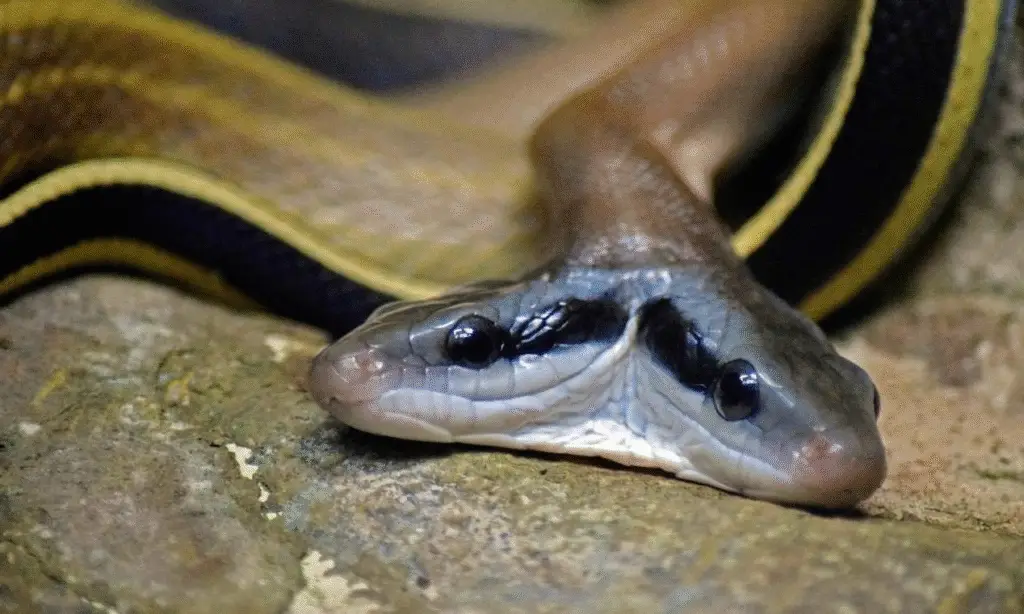Unveiling the Secret of Glass Gem Corn: The Most Colorful Corn in the World!

Glass gem corn/Indian corn/Flint corn, with its vibrant and multicolored kernels, offers insight into agricultural history and genetic diversity.
This remarkable variety of maize captivates with its appearance and carries cultural significance and practical applications.
From its origins in Native American agriculture to its resurgence in modern gardens, glass gem corn represents a blend of tradition, science, and sustainability.
Origins and History of Glass Gem Corn
Glass gem corn has deep roots in Native American agriculture.
These vibrant kernels trace back to ancient cultivation practices by Native tribes who grew maize as a staple crop.
The cultivation methods of these tribes were passed down generations, influencing the multifaceted colors seen in glass gem corn today.
Two key figures played crucial roles in the modern revival of glass gem corn:
- Carl Barnes: An Oklahoma farmer with Cherokee heritage who reconnected with traditional farming methods, reviving rare maize varieties.
- Greg Schoen: Barnes’ friend who received seed samples in the 1990s and expanded the work through cross-pollination and careful documentation.
Their collaboration bore fruit, and in the 2010s, images of this colorful corn went viral thanks to Native Seeds/SEARCH, a non-profit organization dedicated to seed conservation.
The surge in popularity ensured that the seeds were readily available to gardeners and agricultural enthusiasts, sparking a resurgence in heritage farming.
Despite its striking appearance, glass gem corn isn’t just visually appealing. Traditionally, it was used for decoration and ground into cornmeal for culinary purposes, highlighting its versatility.
This corn exemplifies the intersection of history, tradition, and innovation, serving as a link to the past and a beacon for biodiversity in modern agriculture.
Genetics and Appearance

Glass gem corn’s vibrant appearance owes much to its genetic composition.
The dazzling array of colors is the result of complex genetic traits that control pigment production in maize.
Each kernel can display a different hue due to the polygenic inheritance that governs pigmentation, producing a genetic mosaic unique to this variety.
At the core of glass gem corn’s diverse coloration are three main types of pigments:
- Anthocyanins: Responsible for purples, blues, and reds
- Carotenoids: Give rise to yellows and oranges
- Flavonoids: Contribute to the range of shades seen on each cob
The interplay of these pigments, influenced by selective breeding, results in the kaleidoscopic appearance that glass gem corn is known for.
These pigments are controlled by multiple genes, leading to the surprising randomness in color distribution. The practice of cross-pollination ensures a rich genetic diversity.
Each ear of glass gem corn can boast a unique pattern, making no two cobs identical.
The kernels on a single cob can range from deep indigo to pale pink, with touches of translucent white, each blending seamlessly into one another.
The diversity in coloration isn’t merely a visual treat; it exemplifies the resilience and adaptability of maize as a species.
The variation within glass gem corn also underscores the importance of preserving such heirloom varieties.
They carry genetic traits that might be vital for future agricultural resilience, especially as they thrive in a range of environments and resist various pests and diseases.
Cultivating glass gem corn is an act of agricultural preservation and a journey into the genetic marvels that support our everyday crops.
It bridges the gap between ancient farming techniques and modern genetic insights, offering a tangible link to the agricultural past while illuminating the possibilities for future crop diversity.
Cultivation and Growing Conditions

Glass gem corn thrives in well-draining, fertile soil enriched with organic matter. Loamy soils provide an ideal growing medium.
A pH range of 6.0 to 6.8 is most favorable for corn growth, ensuring the nutrients are readily available to the plants.
Key cultivation factors include:
- Planting Season: Spring, after the last frost date
- Soil Temperature: Consistently above 60°F (16°C) for proper germination
- Planting Depth: 1 to 2 inches deep
- Spacing: 4 to 6 inches apart within rows; rows 30 to 36 inches apart
- Sunlight: Full sun, 6 to 8 hours daily
- Temperature Range: 60°F to 95°F (16°C to 35°C)
Consistent moisture is key, particularly during the germination stage and as the plants reach their tasseling and silking phases.
A deep watering method ensures the roots receive adequate hydration. Mulching around the base of the plants can help retain soil moisture and reduce weed competition.
Glass gem corn can face challenges from pests like corn borers and earworms, and diseases such as rust and blight.
Implementing integrated pest management (IPM) strategies can help mitigate these issues.
Regular monitoring and early intervention are key to maintaining healthy plants.
Corn is a heavy feeder, requiring abundant nitrogen, especially in the early stages.
An initial application of a balanced fertilizer at planting, followed by side-dressing with a nitrogen-rich fertilizer as the plants reach about knee-high, can promote strong stalk growth and robust ear development.
Harvesting typically occurs about 100 to 120 days post-germination.
Signs that the corn is ready for harvest include the silks drying out and turning brown, the kernels feeling firm, and the husk starting to dry.
After harvesting, for ornamental use, the ears can be air-dried by hanging them in a warm, dry place with good air circulation.
Uses and Applications

Glass gem corn has practical applications that extend beyond its visual appeal.
While its kaleidoscopic hues make it a popular choice for ornamental purposes, it also has substantive roles in culinary creations.
Decorative Uses:
- Autumnal wreaths
- Table centerpieces
- Seasonal decorations
Culinary Applications:
- Cornmeal for baked goods
- Popcorn (with unique texture)
- Masa for tortillas and tamales
- Ingredient in gourmet food products
Glass gem corn is fully edible and can be a versatile ingredient in various culinary applications. One common use is transforming it into cornmeal.
The ground kernels produce a flavorful and visually appealing cornmeal, which can add unique coloration to baked goods like cornbread, muffins, and pancakes.
The kernels can also be popped, producing small, tender popcorn with a different texture compared to conventional popcorn varieties.
Although the vivid colors do not remain as strongly after popping, the popcorn itself offers a delightful visual treat before cooking and a delicious snacking experience once popped.
For those interested in homemade tortillas or tamales, masa made from glass gem corn can add an extraordinary twist to traditional recipes.
The process of nixtamalization can be applied to glass gem corn, resulting in aromatic masa that brings a natural, albeit subtle, color variation to the dough.
Beyond these immediate uses, glass gem corn has implications in the broader food industry.
Its heirloom nature and genetic diversity make it an attractive option for chefs and food producers who are keen on promoting sustainable and unique ingredients.
This opens avenues for glass gem corn in gourmet food products, artisanal grains, and farm-to-table dining experiences.
Cultivating glass gem corn contributes to the preservation of agricultural biodiversity.
By incorporating this heirloom variety into crop rotations or community gardens, growers can help maintain genetic diversity within maize species, which is essential for food security and resilience.
Cultural and Economic Impact

Glass gem corn holds a significant place in both cultural and economic spheres, particularly among Native American communities and the heirloom seed market.
Cultural Significance:
- Symbol of life, fertility, and sustenance in Native American traditions
- Preserves indigenous agricultural practices
- Connects younger generations to ancestral heritage
- Educational tool for cultural awareness
For Native American tribes, maize has deep-rooted spiritual and cultural significance.
Glass gem corn serves as a living testament to this sacred relationship with the land and their heritage.
It reminds us of the traditional practices and ceremonies where corn played a pivotal role, such as in the Green Corn Ceremony.
Economic Impact:
- Boosts heirloom seed market
- Supports sustainable and organic farming practices
- Creates opportunities for local farmers and producers
- Enhances value of Community-Supported Agriculture (CSA) programs
From an economic perspective, glass gem corn has sparked considerable interest within the heirloom seed market.
Its popularity has bolstered the market, encouraging seed companies and small-scale farmers to prioritize and preserve such unique genetic strains.
“Glass gem corn is not just a crop; it’s a cultural treasure and economic catalyst, bridging the gap between ancient traditions and modern sustainable agriculture.”
This growing interest in heirloom varieties aligns with a broader movement towards sustainable and organic farming practices.
As consumers become more informed about where their food comes from, the appeal of heirloom seeds like glass gem corn figures prominently.
Community-supported agriculture (CSA) programs also leverage the appeal of glass gem corn.
By including it in their produce baskets, these programs offer subscribers a unique product and a story of cultural heritage and sustainable practices.
This enhances the value perception of CSA memberships and strengthens community bonds through the shared appreciation of such exceptional crops.
Glass gem corn stands as a reminder of the intersection between heritage and innovation.
Its colorful kernels symbolize a commitment to preserving agricultural biodiversity and cultural history.
By growing and appreciating glass gem corn, we honor the past while nurturing the potential for future agricultural resilience.
































